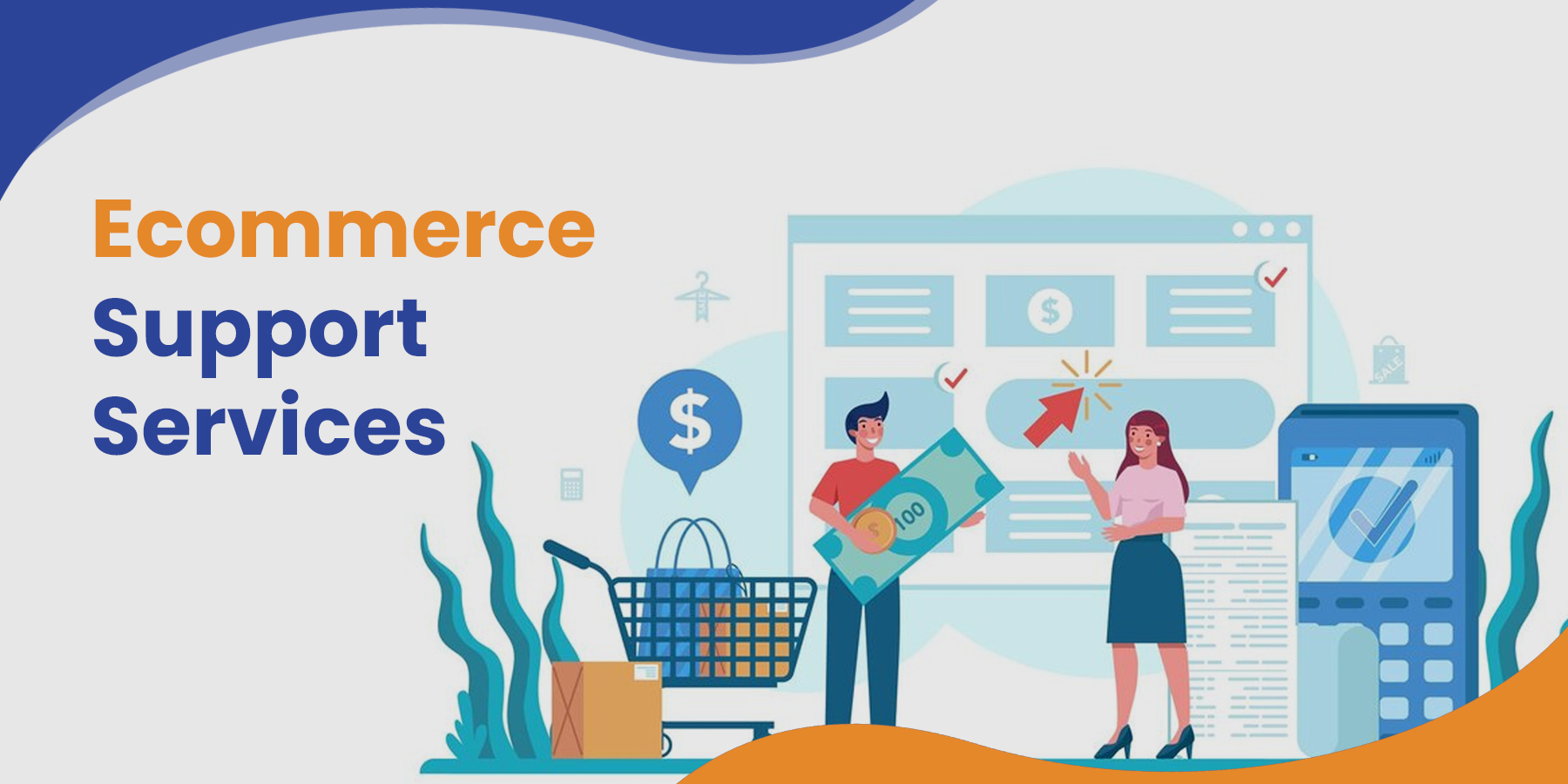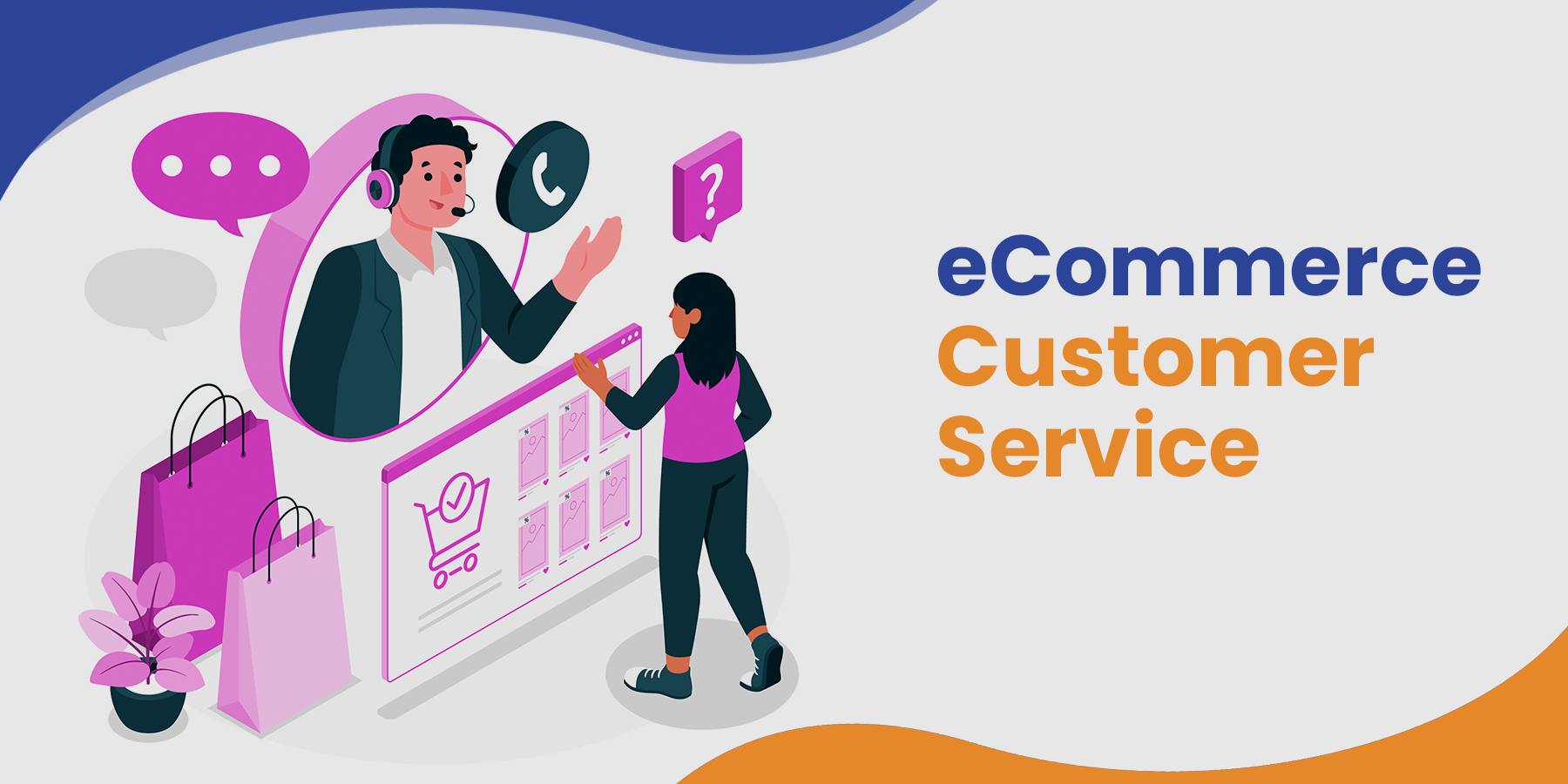
The success of every business relies on the success of its excellent ecommerce customer support. It can have a big effect on a business’s revenue and reputation. A happy customer may grow to be a devoted one who makes additional purchases and refers business to others. To ensure customer happiness and loyalty and to improve the bottom line, organizations must emphasize offering exceptional ecommerce customer support.
We must be aware of the strategies and tactics to use if we want to succeed in the world of ecommerce business. Thus, we’re going to know about one of the leading causes of business failure now. Product, team, market timing, and finance, indeed, all these things are significant, but if you lack this one thing, your days are numbered. What is referred to here is ecommerce customer support, which has the power to alter any company’s course.
Three topics covered in the blog are:
- Value of good ecommerce support services
- Common mistakes brands make
- Specific techniques to deliver satisfied customers
Customers look for brands to deliver on four basic expectations:
- Fantastic delivery window.
- Products of the highest quality
- Best price
- Prompt and trustworthy communication
Four Customer Service Pillars
You will be a fantastic brand if you master these four customer service pillars. Let’s briefly discuss these four significant components, starting with the trillion-dollar problem.
I. Quick Delivery
A company’s success can be significantly impacted by timely delivery, an essential component of ecommerce support services. Deliveries that are late or delayed can cause annoyance, dissatisfaction, and even a loss of faith in the business. On the other hand, customers are more likely to be happy with their experience and return for further purchases when firms prioritize prompt and dependable delivery.
Customers are so used to a consistent delivery time that you, as a brand owner engaging in direct marketing, need to comprehend and compete with them regarding their expectations.
For instance: Product pages on Amazon convert at 15%. In contrast, Shopify pages can convert between one and 5%. The reason for this is that clients are accustomed to Amazon’s exceptional delivery times because the company is so dependable.
II. High Product Quality
Businesses must provide high-quality items to increase consumer happiness and establish a solid reputation. Customers anticipate receiving goods that live up to their expectations and are worth their money. Customers have a favorable experience when firms provide high-quality goods because they meet and exceed their expectations.
People indeed expect high-quality products, and it doesn’t just mean that they shouldn’t break the moment you take them out of the box. It must carry out the precise task you promote in your Facebook ads and website. One of the most significant issues with drop shippers is this. The product initially functions, but over time, producers continuously lower the quality until it is so subpar that it fails to address the original issue for which it was designed.
III. Best Possible Price
The cost is a significant factor in customer satisfaction. Customers expect to pay a fair price for their goods or services. Thus, companies that charge excessive prices risk losing their patronage. However, businesses can increase customer trust by being open and honest about their pricing policies. Customers are more confident in buying decisions when they fully understand what they purchase and why.
For instance: Mark Cuban’s Cost Plus Drugs is a fantastic illustration of a pricing strategy that puts the client’s needs first. On his website, you can see how much the product costs him and the precise markup he charges his consumers, typically 15%. It assures the buyer they are getting the most outstanding deal on the product.
IV. Fast and Reliable Communication
The proverb “an email a day keeps the bad reviews away” fits the fourth pillar perfectly. Customers expect a personalized answer in a quick turnaround time; therefore, you should aim for a response time of 24 to 48 hours. Indeed, even on the weekends. While a quick response time is required, it is also expected that your response would be of high quality and resolve the person’s problems. Some companies believe that investing in ecommerce customer support and quality is crucial.
For instance: An ecommerce customer support representative at Zappos once helped a customer swap a product for 10 hours while they were on the phone together and discussed growing up in New York and even assisted her in finding new shoes to purchase with her credit from the swap.
Businesses Fail Due to Poor Customer Service
So let’s elaborate on why poor customer service is the most significant cause of business failure. According to a Forbes report, 96% of consumers will switch brands if they have a terrible shopping experience. Retention is produced via ecommerce customer support. Retention is the capacity to get customers to buy the same or a different product offering from your organization. It’s the elusive goal that all businesses want.
For instance: Think about Apple; you won’t even look at Android ads once you have an iPhone. You’ll purchase all of their ecosystem’s products, including apps and subscriptions. Best direct-to-consumer e-commerce brands like Hero Cosmetics, GymShark, and Athletic Greens all have outstanding retention rates. Because they have excellent customer service and a top-notch product, customers keep returning.
Customer Service Hacks
I. Using Automation
You may receive ten emails a week when you start. Later, you can receive 50,000 emails per month. A fantastic method to cut costs and the number of agents you require is to use automation. Now, you need to have an excellent platform to be possible.
For instance: Say that a customer inquiries, “Where is my order?” You may receive a lot of those emails on Monday. Applying a filter and a view will quickly condense all those emails into one statement. Because you want a professional response, the ecommerce customer support representative can check that everything is correct before clicking Send, which significantly speeds up the process.
II. Incorporating Your Ecommerce Customer Support Into Your Marketing
Emphasizing your delivery timeframes is one method to incorporate ecommerce customer support into your marketing. Make sure to highlight your dependable and quick delivery process in your marketing materials. Delivery time estimates might be used on your website and email marketing efforts. Additionally, to encourage customers to purchase, consider providing free or discounted shipping.
Another area where customer service ecommerce can be incorporated into marketing is product quality. Make sure to highlight your high-quality products in your marketing materials. You may highlight the worth of your products by using client feedback and testimonials. To show your devotion to client pleasure, consider providing a satisfaction guarantee or simple returns.
Regarding customer service ecommerce, communication is essential, and this may be used in marketing. Throughout the purchasing process, communicate with your customers clearly and consistently. With the help of email marketing, you can keep consumers informed about the progress of their orders and provide support via email, phone, and social media.
Finally, think about employing customer service ecommerce to create a brand-centered community. Encourage customers to interact with your brand frequently, submit reviews, and post about their experiences on social media. Creating a feeling of community will help you build brand loyalty and encourage effective word-of-mouth advertising.
III. Reviews
The third hack emphasizes the value of strategically asking customers for evaluations. Many companies make the error of utilizing general review request templates from their review sites, which may not be efficient in obtaining high-quality client feedback and instead, use automation technologies to create a customized email and ask for reviews 14 days after the product has been delivered. It enables companies to customize their requests and pick particular review sites to direct clients to, such as Trustpilot or Facebook reviews.
Businesses can boost the exposure and legitimacy of their reviews by giving preference to review sites that are well-regarded by customers and have high search engine rankings. It’s crucial to remember that while encouraging customers to post reviews is permissible, promoting five-star reviews is prohibited.
IV. Surveying
The fourth hack involves interviewing non-purchasing cohorts or cohorts that didn’t buy again. You can compile a record of website visitors who joined your email list but didn’t make a transaction. Alternatively, you can compile a list of clients who made a single purchase but never again. To pay better attention, you must genuinely pay attention to these types of cohorts.
V. Live Chat Support Service
Now, this is a typical query. Do I need to use Live Chat? When your ticket count isn’t alright, you should employ live chat. Try to aim for a first reaction time of 24 to 48 hours. Setting up live chat on your website is preferable if you have much less than that.
The biggest problem with live chat support service is that it’s available on websites, but people must be operating it. As a result, when someone asks a question, they receive an answer in a different amount of time than when they send an email, which may be two to three days. With a live chat support service, you want a prompt answer.
VI. Self-Service
The sixth hack is enabling self-service in that live chat. Through this live chat support service, customers can quickly ask for a discount code or their tracking number. They will automatically respond, decreasing the number of required customer support representatives.
VII. Solve Ecommerce Customer Support Tickets
The seventh ecommerce customer support tip is for business owners who don’t need help understanding what their customers want. It’s an excellent habit to develop to actually do the job for a day, log into your customer service portal, and respond to some tickets yourself. Lots of prominent CEOs do this. You’re going to discover things that irritate your customers. You’ll learn how to make your goods and services better. You’ll even gain some improved communication skills with your ecommerce customer support crew.
VIII. Offering Free Returns
The eighth hack is comparable to a seller of parachutes providing free returns if it doesn’t open. Don’t deceive customers by offering them stuff that isn’t even important. The customer will never act in that way, of course. In order to avoid misleading the buyer, you must adequately clarify that information.
IX. Offshore Agents
Using offshore ecommerce customer support agents when appropriate is hack number nine. There’s a widespread misperception that using foreign ecommerce customer support staff will dramatically reduce costs. While this may be the case, creating these global customer service teams might require extensive training and time.
Train employees locally and acquire a similar ticket price if you want rapid and efficient customer service.
Conclusion
A company’s success largely depends on the caliber of its ecommerce customer support. While poor customer service ecommerce can result in unfavorable evaluations and damage a company’s reputation, excellent ecommerce customer support can increase sales and improve reputation. Customers have four fundamental demands of brands: rapid delivery, superior product quality, the ideal pricing attainable, and quick, reliable communication.
Brands may improve client loyalty and gain a competitive edge by mastering six customer service pillars. The importance of providing excellent ecommerce customer support, typical mistakes brands make, and specific methods to ensure delighted consumers are covered in the sections that follow.
This blog is inspired by the video: “Complete ecommerce customer service guide” by “Davy Fogarty”.








